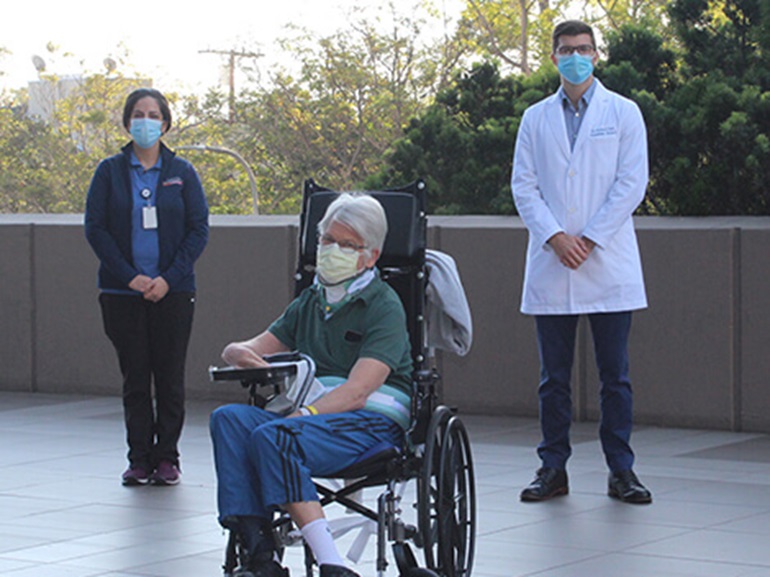Peter’s Story

Ohio native Peter Reiss, 67, began experiencing seizures at age 20. At 22, he suffered a debilitating stroke that required him to re-learn how to stand, walk and speak. Because the stroke significantly affected the right side of his body, Peter also had to learn to eat and write with his left hand. Over the course of the next few years, he made progress with the help of therapy at Georgetown University. Peter eventually moved to California for graduate school and ultimately began a career as a photography professor at UCLA.
In 2008, Peter suffered another stroke while taking out the trash which left him unable to stand and required relearning how to read and communicate. Peter underwent more therapy and was able to resume his normal life, but some of the weakness caused by the two strokes never went away.
In the fall of 2020, Peter suffered an unwitnessed fall at home, but does not remember it happening. He was taken to Cedars-Sinai Medical Center, where it was determined that he had a fracture in one of the vertebra in his neck. After Peter was stabilized, his physicians recommended he undergo intensive rehabilitation at California Rehabilitation Institute (Cal Rehab) to continue his recovery.
Arriving at Cal Rehab
Upon arrival at Cal Rehab, Peter’s primary goals were to improve his speech and walking as well as becoming more independent with personal care. His physician-led care team, which included physical, occupational and speech therapists, created a plan to help Peter reach his goals.
"It helped to understand what I could achieve with rehabilitation."
In speech therapy, therapists worked with Peter on techniques to improve his aphasia, or the loss of ability to understand or express speech, which had been caused by his previous strokes. Occupational therapists worked with Peter on his activities of daily living, including showering and dressing.
A turning point in Peter’s rehabilitation came when physical therapists began helping him use an UPWalker, a rolling walker that enables users to walk upright in a safer, more secure posture. They also focused on building strength and stamina with a variety of exercises, including going up and down stairs. “Every single day, I felt like I was more in control,” said Peter of his progress. “Every single day, I got more of myself back and felt more of a connection to my body.”
The support of his wife, Carol, who participated in family training, and his brother, Will, were particularly helpful in keeping Peter motivated and his spirits high. Peter spoke on the phone to Will each night and took strength from his brother’s battle with and triumph over cancer.
Results
After three weeks at Cal Rehab, Peter was ready to return home with Carol. He plans to continue his recovery with the help of home health. He is proud of his achievements particularly after years of health challenges, stating, “I really liked doing this. I learned how to get back what I’ve lost.”
Peter advises other individuals going through a rehabilitation journey to make the most of their recovery by trying to “listen to and remember every single thing that the therapists tell you. If what they say doesn’t help you today, it will help you in the future.”